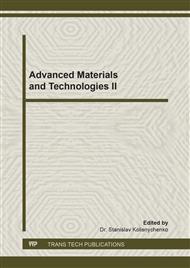p.40
p.80
p.91
p.102
p.112
p.122
p.129
p.137
p.150
Fatigue of Cellulose Acetate and Ductile Metals
Abstract:
By a theoretical consideration of a viscous body it has been deduced a formula for the description of the fatigue properties of ductile metals and plastic materials. This formula has been compared with experimental fatigue data of Wöhler-curves (S-N curves). For cellulose acetate, iron, copper, nickel, silver, zinc and, to a restricted degree, also for aluminum a sufficient accordance between the experimental data and the theoretical curves has been reached. With this procedure it is possible to determine fatigue limits for these materials. Similar results are obtained for the creep of brass. It is supposed that the cause of the fatigue limit is the near surface stress of the specimen.
Info:
Periodical:
Pages:
112-121
Citation:
Online since:
June 2019
Authors:
Keywords:
Price:
Сopyright:
© 2019 Trans Tech Publications Ltd. All Rights Reserved
Share:
Citation:


